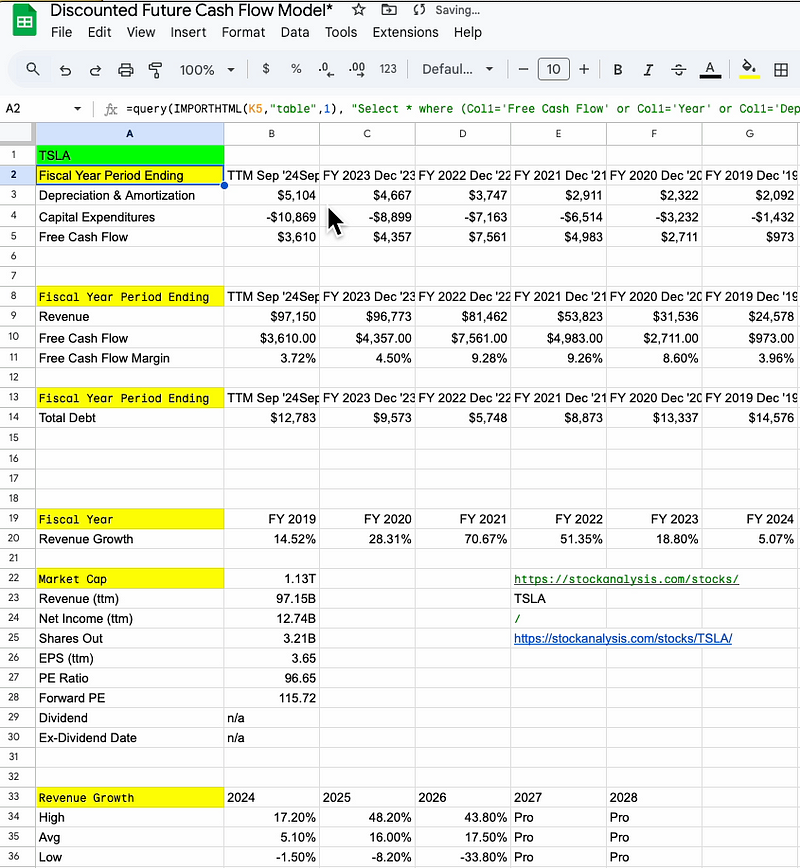- The Moneycessity Newsletter
- Posts
- BEST Tools That Actually Work for Investing
BEST Tools That Actually Work for Investing
Investing doesn't have to be overwhelming - with the right tools and approach, you can simplify the process, save time, and make smarter decisions that pay off in the long run.
I’ve been experimenting with different tools for the 10 years that I’ve been investing, and now I only use three. And I’ve learned that how I use the tool is just as important as the tool. Let me show you what I got.
Watch the extended version HERE.
The Idea Generator
The first step in investing — finding a solid thesis — can take a lot of time and effort. Sometimes I get lucky, and inspiration strikes, like noticing a great experience I had with a company. But most of the time, it’s a grind.
Steve Jobs nailed this. The iPod? A mashup of iTunes, the iMac, and the portability of a Walkman. The iPhone? He added internet and a phone to the iPod. That kind of creative thinking is powerful, but it requires exposure to a ton of information. For me, that means a lot of reading, watching, and even lurking on places like Wall Street Bets. Sure, some ideas there are way out in left field, but every now and then, something sparks my own thoughts. Still, all of this takes time and brainpower.

ChatGPT has been a game-changer for me. It processes information thousands of times faster than I can and compares ideas instantly, creating new insights I’d never piece together on my own. It’s like having a genius assistant who works 24/7 for $20 a month. And there are specialized GPTs for different tasks — one for Excel, and another for financial analysis.

One way I use ChatGPT is by pulling a list of trending topics for the year, feeding them into the tool, and asking it to find intersections between these trends and real-world products or services. I’ll also have it identify publicly traded companies best positioned to capitalize on these trends. In seconds, I have a list of 10 or 20 companies to start researching.

This process takes brainstorming to another level. It’s not just about saving time — it’s about uncovering leads and opportunities I might never have found otherwise. And that’s just the beginning of what this tool can do.
The Research Hub
The next tool I use helps me cut through the noise. When I start with a list of 10 or 20 companies, I need to narrow it down to 2 to 3 worth diving into because I don’t have the time to research 20 companies every week.

I used to rely on Seeking Alpha for this step. It’s solid — they’ve got financials going back 10 years and analyst ratings. But recently, I’ve found a better tool: StockanAlysis.com. It’s like an upgraded version of what I was already using, with more context and better features that make my research process smoother.
The first thing I love about Stock Analysis is how they present financials. Along with income statements, balance sheets, and cash flow, they include a ratios tab — saving me the hassle of calculating them myself. I can also download everything into Excel, which pairs seamlessly with ChatGPT for quick insights.
The second standout feature is how much context they give around analyst predictions. Stock Analysis doesn’t just show metrics like revenue growth or price projections; it also reveals how many analysts contributed and the range of their forecasts. This helps me gauge whether a company’s future is solid or uncertain, which is crucial for making informed decisions.

Using Stock Analysis and ChatGPT together, I can take a whole sector of companies and narrow it down to 2 or 3 strong contenders for a deeper dive. But narrowing it down isn’t the end of the process. I still need to answer two big questions:
Are any of these companies truly worth my money?
Is now the right time to buy?
This is where my final tool comes in.
The Decision Maker
There’s one tool I keep coming back to because it’s flexible, powerful, and completely underrated: Excel. It’s not flashy or new, but the way I use it feels like a cheat code for analyzing companies. Sure, it takes time to build a spreadsheet for a specific type of analysis, but once it’s done, I can reuse it endlessly. It’s like setting up a system that saves me hours down the line.

If I’m focusing on just a few metrics, I can even use Excel’s web scraping functions. All I need to do is type in a stock ticker, and it pulls the data directly into my pre-built equations, ready to analyze.
One metric I rely on is free cash flow, but it’s not a one-size-fits-all number. Free cash flow needs to be adjusted depending on a company’s research and development costs or capital expenditures. Excel makes this simple — I can tweak the numbers to get a clearer picture.

Excel pairs perfectly with tools like Stock Analysis and ChatGPT. I can bring in tons of data, use Excel-specialized ChatGPT to create charts and graphs, and have everything organized in minutes. And with ChatGPT, I can dig even deeper, like figuring out how much of a company’s capital spending goes toward growth versus maintenance.
The hardest part is setting up the spreadsheet, but it’s time well spent. It’s like making an investment: you put in the effort up front, and it keeps paying off. If you’re curious to see how I built my free cash flow analysis spreadsheet, check out this video HERE.
Cheers!


Reply